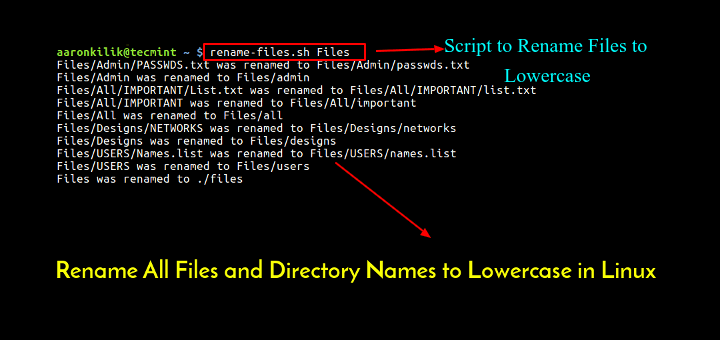
Rename -v 's/example/name/' *.txt Rename Files with Similar Names Note that in this example, we will rename example1.txt, example2.txt, and example3.txt to name1.txt, name2.txt, and name3.txt, use: To rename and replacing the filename with a new filename you can use the following command. To translate lowercase names to uppercase, you’d use To translate uppercase names to lower, you’d use Similarly to change the file extension from.

You should see the following dialog box:Ĭlick on the OK button to change the hostname. Type your new hostname and click on the OK. Select Set system hostname and press the Enter key. To change the system hostname, open the command line interface and run the following command: nmtui You can also change the system hostname using the NMTUI tool. Save and close the file, then restart your system to apply the changes: reboot Step 6 – Change the Hostname Using NMTUI Tool

Replace the old hostname with a new hostname: newpc To change the hostname, edit the /etc/hostname file: nano /etc/hostname In this case, you will need to restart your system to apply the changes. You can also change the hostname by editing the hostname configuration file. Use the following syntax to change the hostname permanently: hostnamectl set-hostname new-hostnameįor example, to change the hostname of your system to newpc, run the following command: hostnamectl set-hostname newpcĪfter running the above command, you can confirm the new hostname using the following command: hostnamectl Step 5 – Change the Hostname Using /etc/hostname File You can use the hostnamectl command to change your system hostname permanently.

If you want to change the hostname of your system temporarily, you can use the following syntax: hostname new-hostnameĪfter a system restart or logging out, the set hostname will return to the previous one.įor example, to change the hostname to newpc, run the following command: hostname newpc Step 4 – Change the Hostname Permanently Operating System: Rocky Linux 8.4 ( Green Obsidian )Īs you can see, the current hostname of your system is vyompc. You should see the current hostname of your system in the following output: Static hostname: vyompc You can check it using the following command: hostnamectl
#Linux rename update
dnf update -y Step 2 – Check Your Current Hostnameīefore setting up a hostname, it is important to check the current hostname of your system. Once you are logged in to your server, run the following command to update your base system with the latest available packages. Connect to your Cloud Server via SSH and log in using the credentials highlighted at the top of the page.

Create a new server, choosing Rocky Linux 8 as the operating system with at least 2GB RAM. Step 1 – Create Atlantic.Net Cloud Serverįirst, log in to your Atlantic.Net Cloud Server.
#Linux rename password
A root password configured on your server.A server running Rocky Linux 8 on the Atlantic.Net Cloud Platform.
#Linux rename how to
In this post, we will show you how to set and change hostname in Rocky Linux 8. Hostname also allows each machine to communicate using the device name rather than the IP address. In this case, we can assign a unique hostname to each machine to remember them easily. However, it is very difficult to remember each host by their IP address, especially in a large environment. When working in the local environment, each system is assigned an IP address to distinguish them from one another on the LAN.


 0 kommentar(er)
0 kommentar(er)
